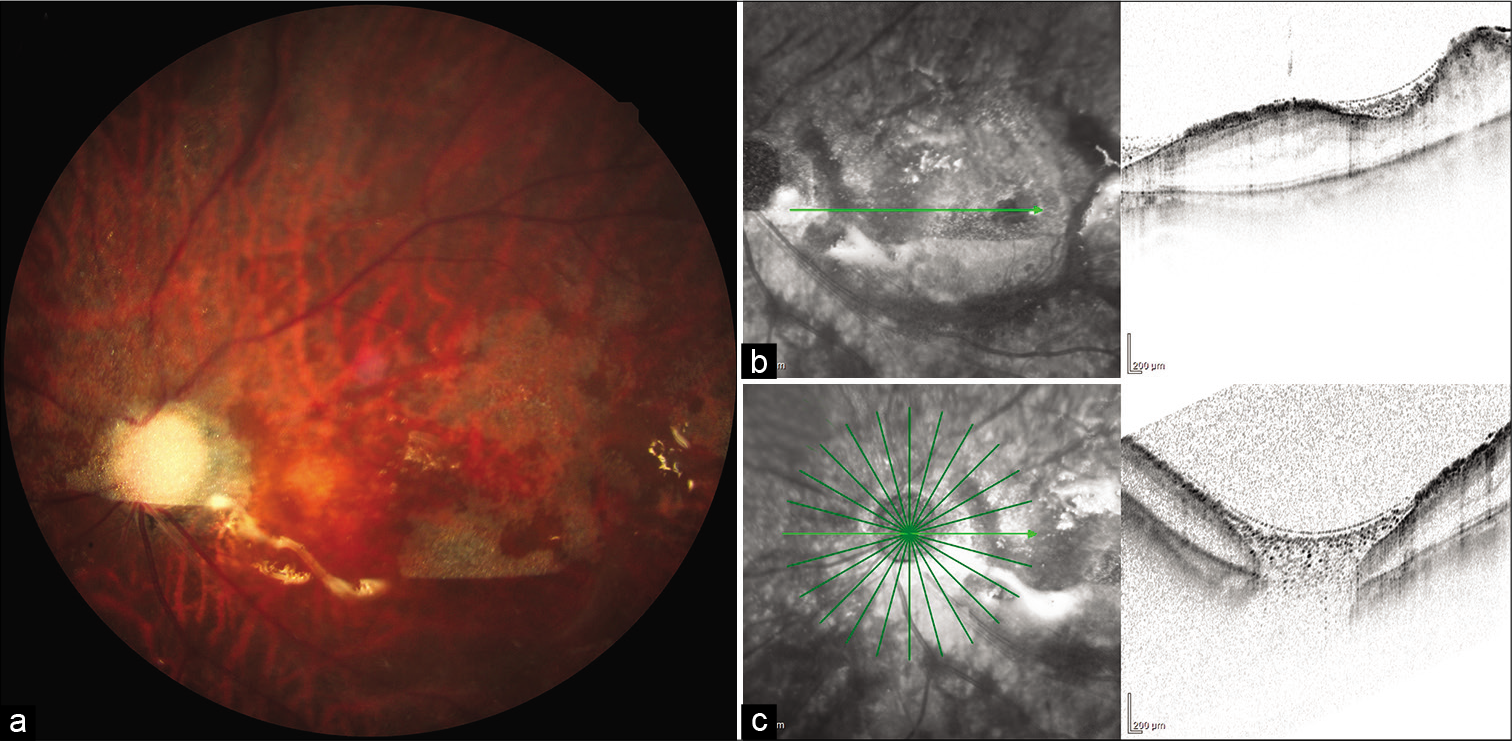Translate this page into:
Incomplete posterior vitreous detachment despite vitrectomy with silicone oil tamponade

*Corresponding author: Sunny Chi Lik Au, Department of Ophthalmology, Tung Wah Eastern Hospital, Causeway Bay, Hong Kong. kilihcua@gmail.com
-
Received: ,
Accepted: ,
How to cite this article: Au SC, Ko CK. Incomplete posterior vitreous detachment despite vitrectomy with silicone oil tamponade. Lat Am J Ophthalmol 2021;4:1.
Abstract
The fundamental step of a successful vitrectomy is posterior vitreous detachment induction; however, incomplete induction sometimes occurs. It may not be well seen barely by ophthalmoscopy examination, but emulsified silicone oil droplets act as the agent highlighting out the two natural retro-hyaloid spaces. The emulsified silicone oil droplets float according to gravity, but were entrapped over the pre-optic disc and the pre-macular bursa, giving the funny double inverse hypopyon-like pattern over the posterior segment.
Keywords
Posterior vitreous detachment
Vitrectomy
Silicone oil
Retinal detachment
Vitreous
INTRODUCTION
Silicone oil is often used in vitrectomy surgery as tamponade agent, particularly in cases with proliferative vitreoretinopathy, given its advantage to patients on immediate post-operative acuity and air travel. However, long term complications associated with emulsification exist. Our case demonstrated how emulsified silicone oil outlines the natural retro-hyaloid spaces.
CASE REPORT
A 60-year-old man underwent 23 Gauge pars plana vitrectomy with silicone oil (SO) tamponade for bullous macula-off rhegmatogenous retinal detachment 10 years ago. He presented to our eye clinic with progressive blurring of vision, and hyperoleon-like patterns were seen over the optic disc and macula [Figure 1a]. Optical coherence tomography (taken with patient sitting upright) demonstrated emulsified SO droplets trapped over the two natural retro-hyaloid spaces: The pre-optic disc [Figure 1b], and the pre-macular bursa [Figure 1c]. This evidenced that posterior vitreous detachment was incomplete in previous vitrectomy surgery, part of the posterior hyaloid remains with few firm attachment points, thus SO droplets could slip into the retro-hyaloid spaces. Patient was subsequently offered revision vitrectomy and SO removal to restore his vision; he was treated ethically adhering to the tenets of the declaration of Helsinki.

- Hyperoleon-like patterns were seen over the optic disc and macula (a). Optical coherence tomography (taken with patient sitting upright) demonstrated emulsified SO droplets trapped over the 2 natural retro-hyaloid spaces: the pre-optic disc (b), and the pre-macular bursa (c).
DISCUSSION
The fundamental step of a successful vitrectomy is posterior vitreous detachment induction;[1] however, incomplete induction sometimes occurs. It may not be well seen barely by ophthalmoscopy examination, but emulsified SO droplets act as the agent highlighting out the two natural retro-hyaloid spaces.[2] The emulsified SO droplets float according to gravity, but were entrapped over the pre-optic disc and the pre-macular bursa, giving the funny double inverse hypopyon-like pattern over the posterior segment.
CONCLUSION
Complete posterior vitreous detachment is important in vitrectomy surgery to avoid future complications of emulsified SO entrapment over the natural retro-hyaloid spaces.
Declaration of patient consent
Patient’s consent not required as patients identity is not disclosed or compromised.
Financial support and sponsorship
Nil.
Conflicts of interest
There are no conflicts of interest.
References
- Non-aspiration technique to induce posterior vitreous detachment in minimum incision vitrectomy system. Br J Ophthalmol. 2012;96:1378-9.
- [Google Scholar]
- Posterior vitreous structures evaluated by swept-source optical coherence tomography with en face imaging. Korean J Ophthalmol. 2018;32:376-81.
- [Google Scholar]






